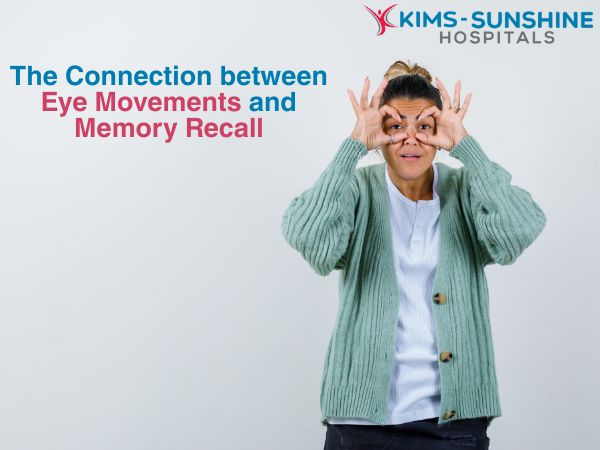
The Connection between Eye Movements and Memory Recall

The human brain holds the secret to our memories. Primarily, the hippocampus, located in the temporal lobe of the brain, is responsible for both short-term and long-term memories. Other brain areas such as the amygdala, cerebral cortex, basal ganglia, and cerebellum also play a significant part in memory processing. Recent findings have shown that there might be a way how eye movements affect memory recall.
Eye movement and brain memory connection
The eyes are the mirrors to the outside world, capturing whatever we see and helping us register it in our brain. Eye movements play a critical role in how we form and retrieve memories. When we recall a previously seen image in our mind, our eyes naturally trace a sequence of movements that closely mirrors the original viewing pattern, even without any supporting visual inputs. This phenomenon suggests that eye movements may function as a link between visual cues and memory retrieval, helping in the retrieval of stored visual memories.
Why does eye direction change during thinking?
When we remember something we’ve already seen, our eyes often move in a similar way as to how they did when we first saw it. Studies prove that the more closely our eye movements during recall match the original viewing pattern, the clearer and more accurate our memory tends to be. This suggests that repeating these eye movements helps our brain reconstruct the memory more clearly and precisely. So, does looking up help you remember? Quite often we see people looking upwards while trying to recall things from memory. While there is no scientifically backed proof for this, looking up could help by reducing distractions and help the mind to focus on the task at hand.
EMDR therapy and memory recall science
Certain eye movement techniques, such as moving the eyes horizontally back and forth (known as bilateral saccades), have been shown to enhance memory recall. This is how the brain uses eye movement to access memory. Bilateral saccades method is utilized in therapies such as Eye Movement Desensitization and Reprocessing (EMDR) to help those individuals who have experienced traumatic episodes and have to deal with disturbing memories. EMDR therapy helps the person by reducing the vividness and emotional association linked with the trauma.
Can eye tracking improve memory function?
Eye tracking has been known to enhance memory function, especially in individuals with cognitive challenges. Children with learning disabilities who underwent eye-tracking training, showed marked improvements in memory and learning abilities. Through such training, they showed notable enhancements in delayed recall and learning speed compared to those in conventional remedial classes. Children with Attention-Deficit/Hyperactivity Disorder (ADHD) and Autism Spectrum Disorder (ASD) have particularly benefited from such training.






